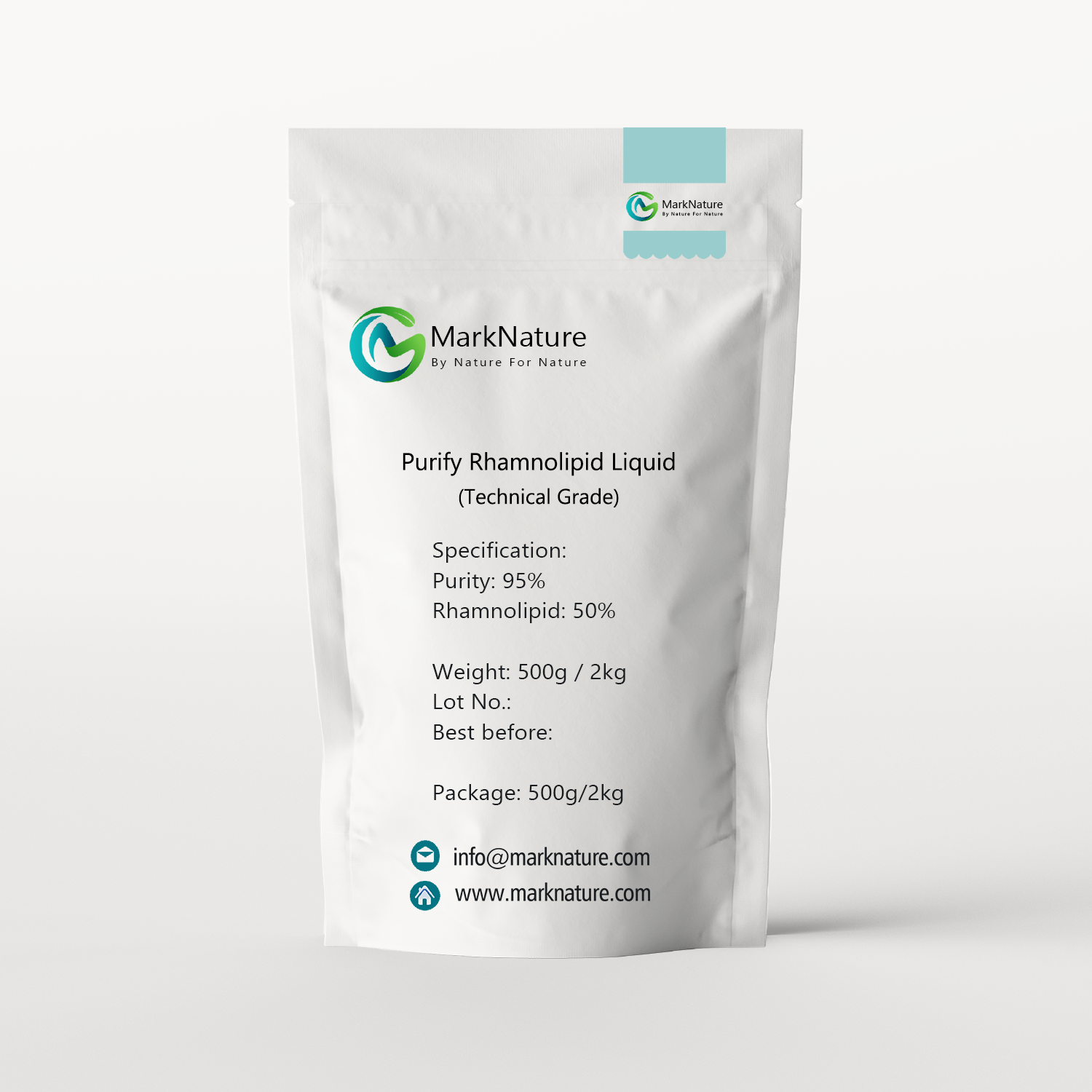Description
MarkNature's Rhamnolipid Biosurfactant, a technical-grade solution ideal for diverse agricultural applications. This potent formulation serves as a versatile tool, functioning as wetting agents, dispersants, emulsifiers, and aids in cleanup and bioremediation processes.
Derived from Pseudomonas aeruginosa, Rhamnolipids are a specialized class of biosurfactants featuring rhamnose as the key sugar moiety linked to β-hydroxylated fatty acid chains. Their multifaceted nature enables widespread utilization across various industries, including petroleum, food, agriculture, and bioremediation, showcasing remarkable adaptability and efficacy.
Rhamnolipid Component:
Monorhamnolipid (Rha-C10-C10, M.W.: 504 Da), CAS No.: 37134-61-5
Dirhamnolipid (Rha-Rha-C10-C10, M.W.: 650 Da), CAS No.: 4348-76-9
CAS No.: 4348-76-9
M.W.: 650.79512
IUPAC name:
3-[3-[(2R,3R,4R,5R,6S)-4,5-dihydroxy-6-methyl-3-[(2S,3R,4R,5R,6S)-3,4,5-trihydroxy-6-methyloxan-2-yl]oxyoxan-2-yl]oxydecanoyloxy]decanoic acid
Other name:
3-[(3-{[6-deoxy-2-O-(6-deoxy-alpha-L-mannopyranosyl)-alpha-L-mannopyranosyl]oxy}decanoyl)oxy]decanoic acid
Specification:
Appearance: Brown viscous liquid
Purity: 95% min. (dry basis)
Rhamnolipid: 50% min.
Surface Tension (mN/m): 35 max.
PH (10%): 6~8
Solubility: Water soluble
Application:
Rhamnolipid biosurfactant is a Non-toxic and environmentally friendly biosurfactant, main used in daily chemical industrial, agricultural, horticultural and turf settings to prevent and control plant pathogens such as downy mildews, Pythium and Phytophthora.
Application in Agriculture:
1) Rhamnolipids possess both lipophilic and hydrophilic surface activities which allow them to reduce surface and interfacial tension, solubilize, emulsify, penetrate and wet. These characteristics enable it to form a directional adsorption film in the plant wax layer and fertilizer solution, promoting nutrient absorption by plants and increasing fertilizer efficiency. Field experiments have shown that agricultural rhamnolipids can reduce fertilizer consumption by up to 2/3 without reducing its efficacy.
2) Rhamnolipids are highly stable, with strong thermal and chemical stability, and resistance to temperature and salinity. It has shown potential for soil remediation by improving soil permeability and micro-ecological environment, and alleviating soil compaction.
3) The double carboxyl structure of agricultural rhamnolipid enables it to have chelating (complexing) function, fixing middle and trace elements around the root system, enhancing fertilizer efficiency and ensuring its long-term effectiveness. It also improves the absorption and conduction utilization rate of middle and trace elements, and has biological stimulating and growth promoting functions.
4) Rhamnolipids are biodegradable and do not cause secondary pollution to the environment. Suggested applications include adding 2-5% to the fertilizer formula and diluting the finished fertilizer by 30.

